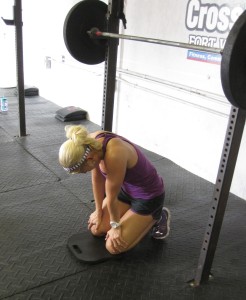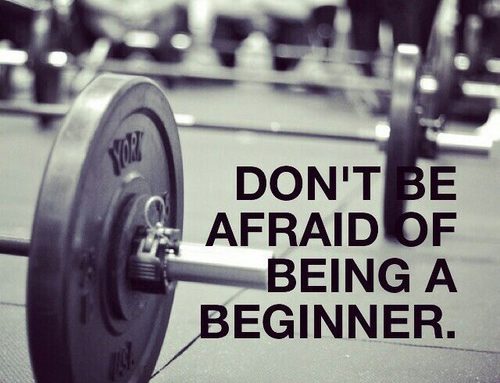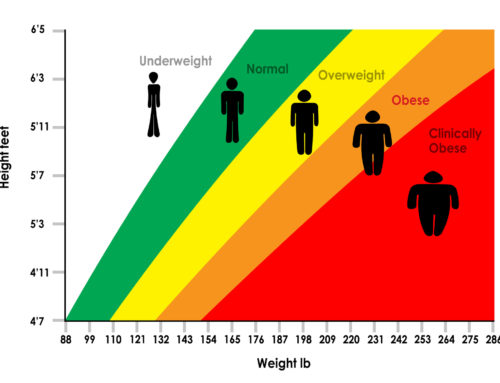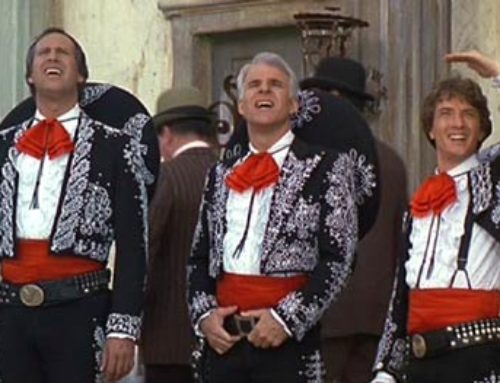
I have had several conversations with gym owners, coaches and personal trainers recently regarding why some masters quit crossFit. Now, we all know that some people just don’t want to work that hard. So, I will get that out there right from the start. CrossFit is not for the individual that doesn’t want to sweat, challenge their weaknesses or get real results. If you want to talk and walk on the treadmill, then move on. We also know that some individuals merely lack the self motivation, discipline and skill set to follow through with action that is focused, goal and outcome oriented. People don’t change unless there is a readiness to change.
But for those who want to get fit, develop a better quality of life and promote youthfulness, crossFit can be a great training program. That is if you are not getting injured. So, have you ever wondered how many masters athlete start crossFit and quit? Why do they sometimes just disappear from the gym scene? The reasons appear to be not too dissimilar from their younger counterparts, but in my opinion older athletes have an inclination toward cautionary responses which cause them to quit more often. Research shows that the older a person becomes the less they strength train and perform high intensity exercise and the more they use cardio and endurance style training. Unfortunately, the research also shows us that this is the opposite of what they should be doing to slow the deterioration of the 10 general physical skills. Here are some of the reasons why masters quit crossFit.
1. Injury – many masters athletes suffer an injury, seek treatment and are then counseled not to return to crossFit. Due to the nature of the aging athlete, they believe the idea that maybe a less vigorous exercise program would be better and more applicable to their aging status. Unfortunately, this is not consistent with research. Also, they try to get back to training but suffer an injury that is not easily resolvable and then don’t know what to do to promote return to training. There is also sometimes inadequate coaching resource for return to training of the injured athlete and that leads us to the next reason.
2. Inappropriate Coaching – when a masters athlete walks into the door of the gym, I hope that the coach that is on post, evaluates the athlete specific to their lifecycle, history and training needs. Unfortunately, many CF coaches don’t. In the Fortify seminar we go into detail understanding the lifecycle of the athlete, athletic history and desired outcome; fitness, competitive or elite. Coaches who use their same training model for the young and older athletes are missing the boat. Like Coach Glassman States, “training intervention should differ in degree not kind.” Modifications should be made to the training frequency, intensity, duration and mode (FIDM).Particular attention should be applied to the principle of Minimal Effective Dosage(MED). Just enough training to stimulate growth and change without over or under dosing. Just because you can smash an athlete with training, doesn’t mean you’re a good coach!
3. Inappropriate Training – similar to poor coaching, training performed by the masters athlete that is not appropriate can have lasting damaging results. Buyer beware on this one! In other words, as an athlete, be responsible with your training. Look for a coach that programs training that is appropriate for your age group and then do it! Stop trying to keep up with the young guns and get back to the reason why most of us train anyway, looking good, feeling youthful and being fit. If you have to ask yourself twice if you should do something, walk away and train another day.
4.Poor community support – here’s one to think about. You walk into the gym, everyone is 20 something, no one to relate to or train with that can relate to you. Sound familiar? If you have a thriving masters community at your gym, be thankful. If not, look for one. Yes, it is great to hang with the youngsters and also somewhat therapeutic, but eventually you are going to want to train with some cohorts that are similar in life experience and training response.
5. Social influence/peer pressure – listening to others can always be a double-edged sword. If you’re listening to someone who has what you want in life, it might be a good thing. But, if you’re listening to someone who is reported expert and has very little in the form of demonstrative results, run don’t walk. Far to often we listen to those around us who tell us we shouldn’t be doing this or that and then give us their “advice” as to what we should be doing. I’ll make this very simple, if they don’t have results in their own life, stop seeking, allowing or listening to those who have no evidence! It’s a killer. Seek wisdom, experience and interact socially with those who have similar goals and are just above your ability and success level! Take my word it works! The best thing I did as an athlete and businessman was to stop listening to those who had never done, and started listening to those who do! There is a self-reported expert around every corner. Beware! Do what they advise you to do and you just might have what they have…
So what do we do to promote the masters athlete to NOT quite CrossFit or any exercise regime for that matter? Let’s take the reasons above and address them in order. First, train with a program that provides a positive ratio of risk versus the rate of return. Younger athletes just starting program and take greater risk for greater return, but older athletes should be transitioned slowly to insure that their ready for the risk of training versus its reward. Stay as injury free as possible and invest in your fitness. Secondly, stay away from coaching that is cookie cutter or doesn’t understand the needs of masters athletes. How do you figure that out? This blog and others like it, the CF Masters group and 40fit Masters group on Facebook, and other educational resources are great tools to learn how to train and what good coaching looks like. Along those same lines, look for programming that is balanced and creates and training response but also makes you feel good! If you always feel beat up, adjust and evaluate your programming and work/rest/recovery cycles.
Look for a gym with a strong community of support! If you don’t have it where you’re at, find it. It is worth the extra five, ten minutes driving to get into a solid community of masters athletes and good coaching. If your present coach is threatened by that, find a new one. Excellence never has to explain itself, it is easily understood. Surround yourself with winners! Look for people who have results in whatever you’re looking to improve. If you want to grow a relationship, look for solid relationships around you with longevity. If you want a solid fitness level with real results, look for those who have what you want!
Coach D




Well said, Coach D. Thank you.
I am a 3 time CrossFit Games finalist (2010,2011,and 2012). I started CrossFit in 2004, and was certified by G. Glassman at a 3 day workshop in 2005. I own a gym and a CrossFit affiliate. I’m 62 years old. I haven’t trained with CrossFit in 2 years when I realized that constantly varied, high intensity exercise does not yield consistent results. I found a sport, weightlifting, I liked better. I was never injured in CrossFit probably because of years of strength training and a daily mobility practice. CrossFit was fun and exciting at first, but did not offr the training results (increased strength and technical proficiency ) I sought.
Could you please cite the research that shows that “that the older a person becomes the less they strength train and perform high intensity exercise’? Thanks.
See the following position paper from the ACSM. Read Section 1, Declining Physical Activity and Section 2 Physical Activity and Aging. You can then also follow the references within those sections and read those studies. Also, 25 years of treating 40+ individuals has evidenced that the large majority of people stop heavier strength training and higher intensity exercise for lower load training and aerobic exercise at lower intensity levels. Unfortunately, the literature also shows us that sarcopenia and reduced innervation of fast twitch fibers reduces our strength and power and represents the #1 declining physical skill of the 10 general physical skills. In response to this decline, I highly recommend all athletes for that matter to continue year round strength/power training with an undulating periodization model. Also, the same study listed above has some interesting information relating to power, strength and the speed of training for older populations.
Forgot the paper reference.
http://www.chap.uk.com/pdfs/Exercise_and_Physical_Activity_for_Older_Adults.pdf
I like the read, and the blog in general. Would love to see how we could promote the Masters Tour through your site. http://www.thegaragegames.com/events/the-masters-tour-ga-pride/the-masters-tour/
Great information. Thank you.